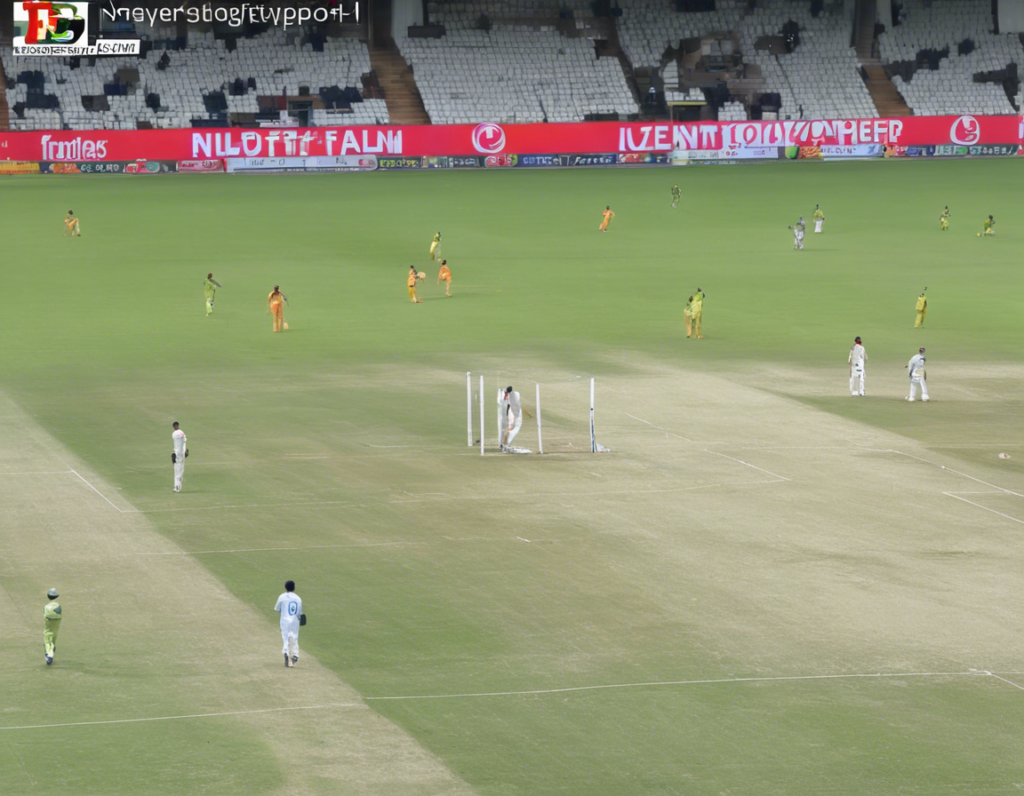Picture this: You’re all geared up for this highly anticipated match, and you can’t wait to see your favorite team in action. But wait, have you checked out the all-important match pitch report? For any cricket enthusiast, understanding the pitch conditions can make or break a game. Let’s dive deep into decoding today’s match pitch report.
Understanding the Pitch
The “pitch” in cricket lingo refers to the central strip of the playing field, where most of the action takes place between the bowler and the batsman. The pitch can have various characteristics that heavily influence the game’s outcome, such as pace, bounce, spin, and carry.
Types of Pitches
1. Green Tops:
- These pitches have a lush green covering of live grass.
- Green tops are fast, bouncy, and heavily assist pace bowlers.
- Batsmen find it challenging to play shots, and the ball tends to seam around.
2. Dry and Dusty Pitches:
- These pitches lack moisture, causing them to crack and deteriorate.
- Dry pitches are favorable for spin bowlers as the ball grips and turns sharply.
- Batsmen might find it difficult to judge the ball’s behavior due to uneven bounce.
3. Flat Pitches:
- Flat pitches are batting-friendly tracks with consistent bounce and pace.
- Batsmen can play their shots freely, and bowlers need to rely on variations to take wickets.
- These pitches often produce high-scoring games.
Factors Influencing the Pitch Report
1. Weather:
- Rain can soften the pitch, aiding seam bowlers.
- Sunlight can bake the pitch, making it dry and favoring spinners.
2. Pitch Preparation:
- Groundsmen prepare pitches based on the team’s preferences or traditions.
- Some pitches are deliberately tailored to favor the home team’s strengths.
3. Pitch History:
- Past matches on the same pitch can give insights into how it might behave in the current game.
- Pitch reports from previous games help teams strategize better.
Reading the Pitch Report
1. Grass Cover:
- A green top suggests assistance for fast bowlers.
- Lesser grass often indicates a batting paradise.
2. Hardness:
- A hard pitch assists bounce and pace bowlers.
- Soft pitches are more suitable for spinners.
3. Cracks and Rough Patches:
- Visible cracks hint at variable bounce, favoring spinners later in the game.
- Rough patches can make stroke-making challenging for batsmen.
Tactics Based on Pitch Conditions
1. Pace-friendly Pitches:
- Teams may opt for an extra pace bowler to exploit the conditions.
- Batsmen need to play close to the body to counter the seam movement.
2. Spin-friendly Pitches:
- Including an additional spinner can create havoc in the opposition ranks.
- Batsmen must use their feet well to negotiate sharp turn.
3. Batting Paradises:
- Building a solid partnership becomes crucial on flat tracks.
- Aggressive strokeplay can put pressure back on the bowlers.
FAQs on Match Pitch Report:
1. How do I access the pitch report before the match?
- Pitch reports are often shared by commentators, analysts, or team coaches before the game.
2. What if the pitch report contradicts the team’s strategy?
- Teams need to be flexible and adapt their tactics based on the actual conditions during the game.
3. Can pitch reports change during the course of a match?
- Yes, pitch behavior can alter due to weather conditions, wear and tear, or even the nature of the match (Test, ODI, T20).
4. How do groundsmen prepare pitches for different formats of the game?
- Test match pitches are usually more conducive to spin and seam bowling, whereas ODI and T20 tracks are flatter for high-scoring games.
5. Are there any specific player statistics that correlate with certain pitch types?
- Some bowlers might have a better record on spin-friendly pitches, while certain batsmen excel on fast tracks. Analyzing player stats on different pitches can be insightful.
In conclusion, mastering the art of interpreting the match pitch report can give a competitive edge to teams and fans alike. It adds a strategic dimension to the game, making it more than just a battle between bat and ball. So, next time you tune in to watch a cricket match, pay close attention to the pitch report – it might just hold the key to the game’s outcome.
